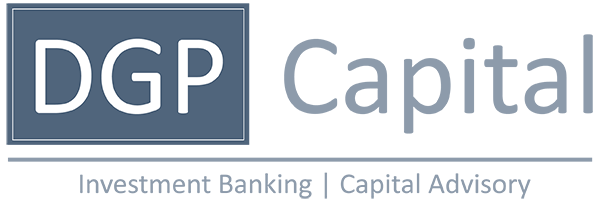Debt vs Capital Advisory
The ongoing rise in inflation – which hit 8.26% on an annualized basis in the U.S. in August -– changes some of the considerations regarding a middle market company’s decision to hire either a debt advisory or a capital advisory firm. Debt advisory firms, as the name suggests, focus on fixed income and credit solutions. Capital advisory firms have expertise in both debt and equity markets, and therefore can focus on the solution that works best for the client.
Since , especially if the latter offers a broader menu of solutions. In particular, inflation is diminishing some of the advantages that of the debt markets have enjoyed in recent years – investor insensitivity to credit risk and very low interest rates – are diminishing and this capital advisory firms, which can offer has changed the advantage of straight traditional debt financing over a more tailored, structured capital solutions, now look to be the better choice approach to capital raising.
Challenging Context
There is no perfect solution to middle market firms’ financing issues right now. Fed officials are beginning to publicly raise the concern that the central bank’s rate hikes will tip the economy into a recession – something bad which will have a negative effect on for both equities as well as debt and debt markets. The Fed has begun taking the inflation situation more seriously, and is committed to raising rates. to keep inflation expectations from becoming “embedded” in consumer and business spending psychology.
The Rule of 72, a popular shorthand calculation for determining the speed of price increases, indicates implies that if inflation remained at its August 2022 levels, prices would double from current levels in roughly 8.7 years. Whether incomes would rise enough to offset this is unclear. The pain of the late 1970s / -early 1980s period of hyperinflation, and the deep recession caused by that the Fed’s rate hikes, engineered to bring it under control, are sobering precedents.
The Eurodollar futures market is reflecting a high probability that the Federal Funds rate will peak at 4.6 percent in 2023. Since rate hikes often lead to downturns with a nine-month lag, the full effects of the Fed rate hikes might not be seen until late 2023. That makes typical capital raising – often challenging for private middle market firms in the best of times – more difficult due to both the rate increases and uncertainty over the possibility of a recession.
The supply shocks, effects of massive stimulus payments, and War in Ukraine are all contributing to inflation, and might do so for some time, despite the Fed’s efforts.
Equity Market Shifts
Rate increases have also allowed some investors to move away from the TINA mindset – meaning “there is no alternative” to equities. As rates rise, investors might shift capital into higher-quality debt instruments. The collapse of the popular FAANG stocks over the past year has brought a new sense of caution to the markets. And, while S&P earnings yields remain a full percentage point above one-to five-year US credit yields, at 5.9 percent, according to Bloomberg (via the Financial Times), over the 30 days to September 19, they were 5.7 times more volatile. Volatility erodes returns.
Private equity is also facing some “stern tests” this year also, according to industry data provider Preqin. The number of fund raisings closed globally in the second quarter of this year was at its lowest level since the beginning of the Covid COVID pandemic. Capital is still flowing in, but the amount of “dry powder” - committed but uninvested capital - is increasing. Meanwhile, banks are finding it difficult to place mega-deal debt packages for private equity firms, like the $15 billion of debt backing Vista Equity Partners and Elliot Management’s acquisition of Citrix.
The effects of this on middle market private equity deals remains to be seen, but banks’ growing reluctance to lend emphasizes the need for an advisor with broad expertise across the markets. While that’s a mega deal, rather than middle market, it seems reminiscent of 2008, when banks had billions in losses on these deals, bringing the whole industry to a standstill.
Where to Turn?
With both debt and equity markets facing their biggest challenges in recent memory, there is a strong argument for using a capital advisory firm with access to a broader range of markets.
Private placements, leveraged loans, high yield, structured products, asset-based financing, factoring, private equity, and venture capital should all be on the menu. None of these options is perfect in an environment characterized by high inflation, rising rates, and a potential recession. The choice for a middle market firm needs to be considered carefully.
Restructuring balance sheets for the new environment also will be an important skill for your an advisor to have. For example, the number of heavily indebted companies that cannot cover their debt servicing from cash flow – so called “zombie companies” -– has risen in recent years due to the decline in borrowing costs caused by the Fed’s “quantitative easing on steroids,” according to Martin Fridson, a high yield market expert.
Most of these have been public market borrowers, although the leveraged loan and other private borrowing markets have been active as well. Middle market firms facing the need to extend their tenors on leveraged loans or high yield bonds, or re-equitize, need good advice on just how to accomplish this at a time when both debt and equity markets are moving in unfavorable directions.
In Conclusion
Although debt advisors will continue to play an important role in the middle market financing ecosystem – and there is no saying that all capital advisors are equally competent – in an environment like this, there is a strong argument to have an advisor with deep expertise in as many financing alternatives and strategies as possible.
